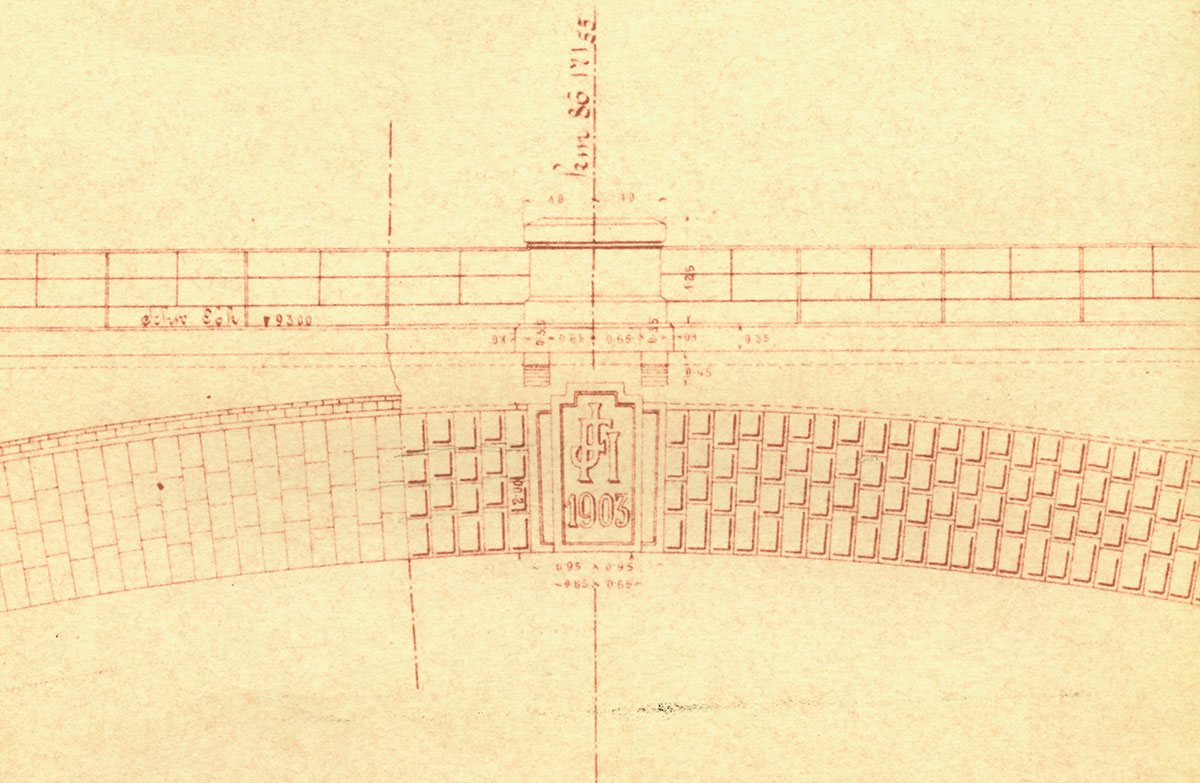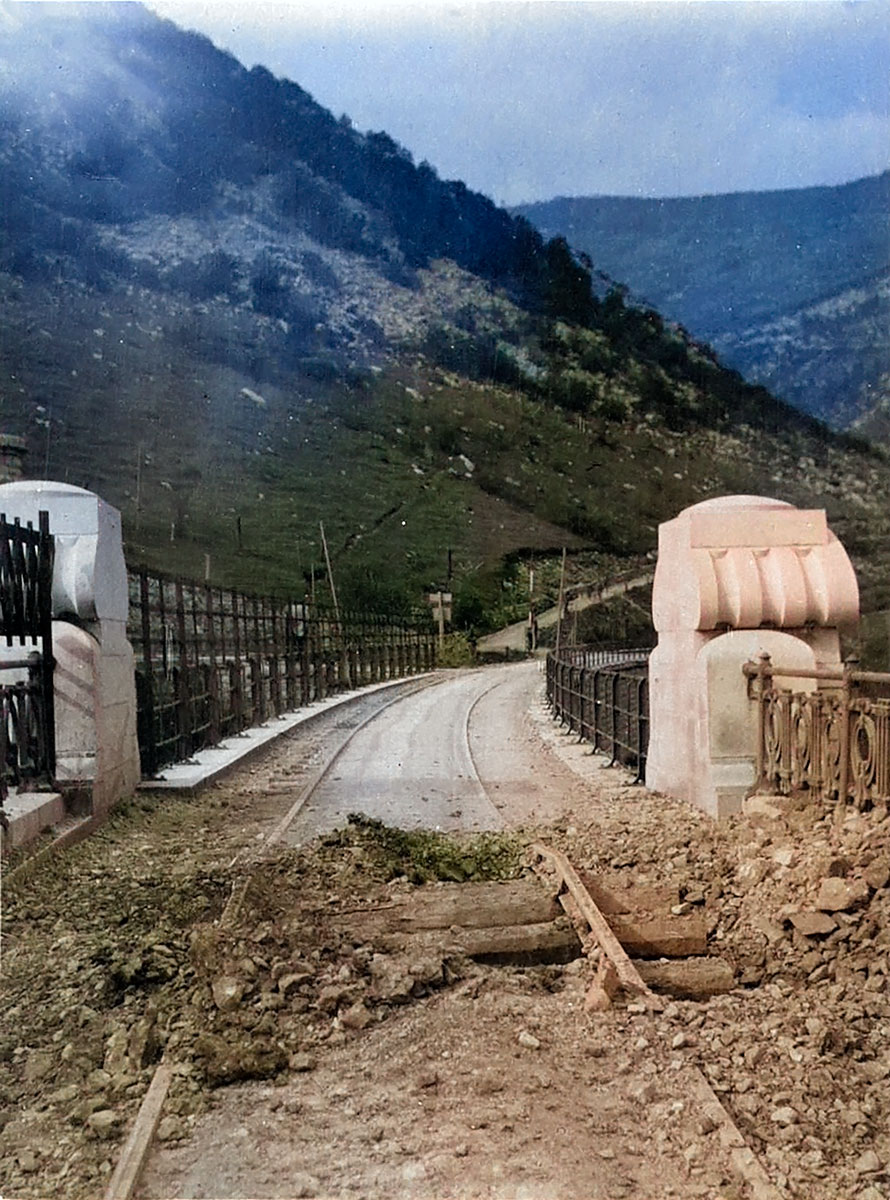CHANGE TO THE DESIGN OF THE SOLKAN BRIDGE AND THE RAILING
The original design of the stone arch of the Solkan Bridge was a little different then it could be admired in the final image. A copy of the plan from the 1903 shows two distinctive features.
The first refers to the middle of the arch, where the initials of the then Emperor Franz Joseph I were intended to be inscribed. For example, the Dragon Bridge, which was initially called the Jubilee Bridge of Emperor Franz Joseph I, had a similar inscription with initials. Another special feature is the railing above the arch, which was intended as Wagner’s railing of the simpler type, i. e. without laurel wreaths and ribbons.
With the extension of the arch span came also stylistic corrections. In the final image, the more richly decorated Secessionist railing replaced the railing of the simpler type, and the initials of the emperor disappeared. These changes to the details suggest that a special significance was given to the bridge. It can be assumed that the Secessionist railing replaced the meaning of the ruler’s initials, thus symbolically demonstrating that this was an imperial bridge. This assumption is also confirmed by the fact that the same type of railing was used in the centre of Vienna on the Franz Joseph I embankment. In addition, the Solkan Bridge was not an ordinary bridge – it was a bridge with the largest stone arch in the world. Wagner’s Secessionist railing also created a symbolic connection between Vienna and this section of the railway line, especially the Solkan Bridge.
 The original plan of the Solkan Bridge from 1903 had a carved inscription with the initials of Emperor Franz Joseph I. (stored by the Slovenian railways Archive in Nova Gorica).
The original plan of the Solkan Bridge from 1903 had a carved inscription with the initials of Emperor Franz Joseph I. (stored by the Slovenian railways Archive in Nova Gorica).
In addition to the railing, four Secessionist stone pillars represented a special aesthetic element. These marked the area above the arch of the bridge and separated the more richly decorated railing from the simpler one, which still stands in its original form. Today, the pillars are a little lower than the previous ones, and four important years for the bridge are inscribed on them with Roman numerals (1906, 1916, 1925, 1927).
 The Solkan Bridge photographed towards Sabotin, 10/04/ 1916. On the far-right side of the photograph can be seen a decorated railing, separated by two pillars from the railing of the simpler type (stored by the Vienna State Archive, KA, BS I WK Fronten Tirol, 11162).
The Solkan Bridge photographed towards Sabotin, 10/04/ 1916. On the far-right side of the photograph can be seen a decorated railing, separated by two pillars from the railing of the simpler type (stored by the Vienna State Archive, KA, BS I WK Fronten Tirol, 11162).
So far, it is not known who decided to place this railing element on the bridge. It is difficult to assert that it was Wagner’s idea. The credit could be attributed to one of the designers of the plans or constructors of the bridge and its elements. A definitive answer could be given by archival sources, which for the time being remain unexplored in the Vienna archives.